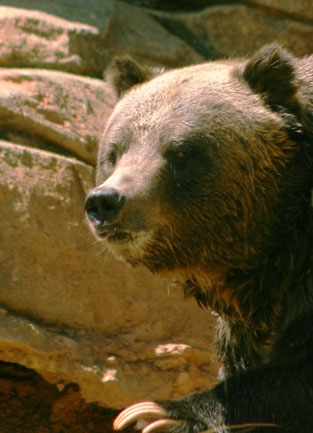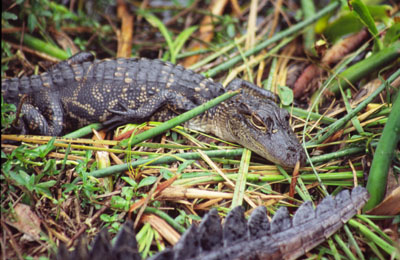A month ago I made a post asking some questions about wildlife photography ethics, most especially the how, when, and why of staging shots using captive animals or controlled conditions. Audubon Magazine decided to one-up me on this topic and posted their own article, naturally going into a little more detail than I did (but I brought mine in under a much tighter budget, so there!)
To their credit, they exposed the dubious practices of some game farms, which are places that maintain a selection of animals to be used for (in these cases) photographic purposes. The animals are in no way wild, have usually been captive since birth, are fully habituated to humans, and in some cases trained to perform. And nature photographers are the prime customer.
Some nature photographers. This can in no way be considered universal among photographers, any more than any other practice. Most of the photographers I know (myself included) don’t think much at all of the practice, and most especially consider the misrepresentation of such photos as contemptuous.
Now, you should feel free to question what the difference is between game farm shots and, for instance, a zoo. For the most part, not very much. A key point is that zoos exist for a much broader purpose, and most strive to maintain very high standards in animal care. Photographers aren’t a target customer of the zoos and aquariums – they’re aiming more for education, and often for endangered species support. This can be argued too – does it work better leaving the animals out of it entirely and using only films and photos for education? Is captivity even ethical for any purpose?
I’ve had that discussion before, and it really is a matter of opinion. I’ve also had the discussion of vegetarianism and veganism, too, and remain a blatant omnivore. Your opinion is all up to you. We can, of course, make distinct efforts to maintain standards for any animals under our care, and this should certainly hold true for game farms. It’s unfortunate that the regulation of such tends to fall under individual states and even counties – federal level laws govern only endangered/threatened species, trafficking, and animal fighting in the US.
But there’s another aspect of this, akin, believe it or not, to drugs in this country: if there’s a market, it will be exploited. And this is where the Audubon article fell a bit short. It seemed quick to blame photographers for the brunt of it, and the game farms close behind. But this is a bit of a disingenuous face for a magazine to put on, especially one that purchases wildlife photos. I touched on this in my own post, and am reiterating it here: the provenance of the photo is rarely, if ever, a factor in the editors’ purchases. There is no price difference between staged and honestly wild photos to the vast majority of editors and publishers, and few that stipulate that they want only wild images. To be fair, the article made it clear that Audubon itself, as well as several other major magazines, made distinct efforts to buy genuinely wild photos. But, as they admit, they’re a small share of the market. Should I be doing this for a living, the occasional sale to those particular magazines isn’t going to cover the bills.
 Let’s look at it from the market point of view. I am an editor, and I have a new article in my hands about a disease hitting brown bears. I have three days to get to press, and it needs an illustrating image. Moreover, the layout of the magazine requires an image that works well as a vertical composition, a certain size, and facing to the left – graphic layouts really do require such things, and many more besides. Note that the article is not about brown bears in a certain area, habits, populations, or anything specific – I just need a bear. The photographer I’m going to call is the one who has the best selection of brown bear shots so I can find one that fits my intended layout quickly. One-stop shopping. I have no reason to care if it’s actually a wild shot or not.
Let’s look at it from the market point of view. I am an editor, and I have a new article in my hands about a disease hitting brown bears. I have three days to get to press, and it needs an illustrating image. Moreover, the layout of the magazine requires an image that works well as a vertical composition, a certain size, and facing to the left – graphic layouts really do require such things, and many more besides. Note that the article is not about brown bears in a certain area, habits, populations, or anything specific – I just need a bear. The photographer I’m going to call is the one who has the best selection of brown bear shots so I can find one that fits my intended layout quickly. One-stop shopping. I have no reason to care if it’s actually a wild shot or not.
The photographer who has camped out in the wild, shot from blinds, and spent weeks of discomfort and sometimes outright danger to get the long shots of a bear family can lose out to the game farm photographer, who has 200 photos from one afternoon, nice and tight and sharp. Moreover, even if those wild shots sell, they sell for the same price, and nature photography, seriously, is on the low end of the photographic payscale! Shit, why bother? Ethics? That’s all well and good. Here I am, ethical photographer – do I get my camera equipment cheaper because of it? My utilities, housing, travel expenses? Don’t make me laugh. As nihilistic as it sounds, in these cases ethics are good only for an individual’s piece of mind. Sometimes, that’s enough, but it’s silly to think this should apply universally.
So are the photographers to blame for the market? Please. Which makes the point repeated throughout the article, as well as the blatantly accusatory tagline, rather offensive. And their point is really far too scattered for a magazine of their caliber anyway. They talk about photographers, editors, documentaries, calendars, and posters, even going back 100 years! Disney, Wild Kingdom, even David Attenborough! Okay, fine, it’s a common practice, only now receiving some strictly voluntary ethics. How did photographers get to be the baddies?
Using the illustration example above, what’s unethical about it? It really is a brown bear, and no one said it’s in the wild. The article makes no mention of that bear, only studies of an illness. So? Illustration does serve a purpose, and frankly, if an article mentions capybaras, and I have no idea what a capybara is (we’re making pretend for the sake of argument,) am I being disadvantaged or misled when the image is of a captive capy? Do I even care? Should I?
Audubon’s article made a big deal out of the intentional misrepresentation of some images, and yes, it does happen. They’re more capable of tabulating this than I, but a few examples isn’t exactly an epidemic. Especially when, pardon me for pointing this out, they’re asking for contest images from the general public and using them without fees. Hey, you get what you pay for! It’s not particularly hard to determine if an image is genuine or not – good photographers usually have a whole sequence of images that can show the conditions, as well as the receipts for their expenses, even journals of their expeditions. Determining authenticity, and making it important, is the responsibility of the publisher. The photographers have only moderate control over end usage, and may even lose out on credit lines. If Audubon decries the practice and wants better standards, blaming the photographers is a shitty way of going about it.

[If I seem overly defensive to you here (“the lady doth protest too much“,) I apologize. While I would love to do this for a living, the nature of the market makes that extremely difficult, and this has been dictated by the publishers themselves. To then see one trying to defer blame is more than a bit irritating.]




















































